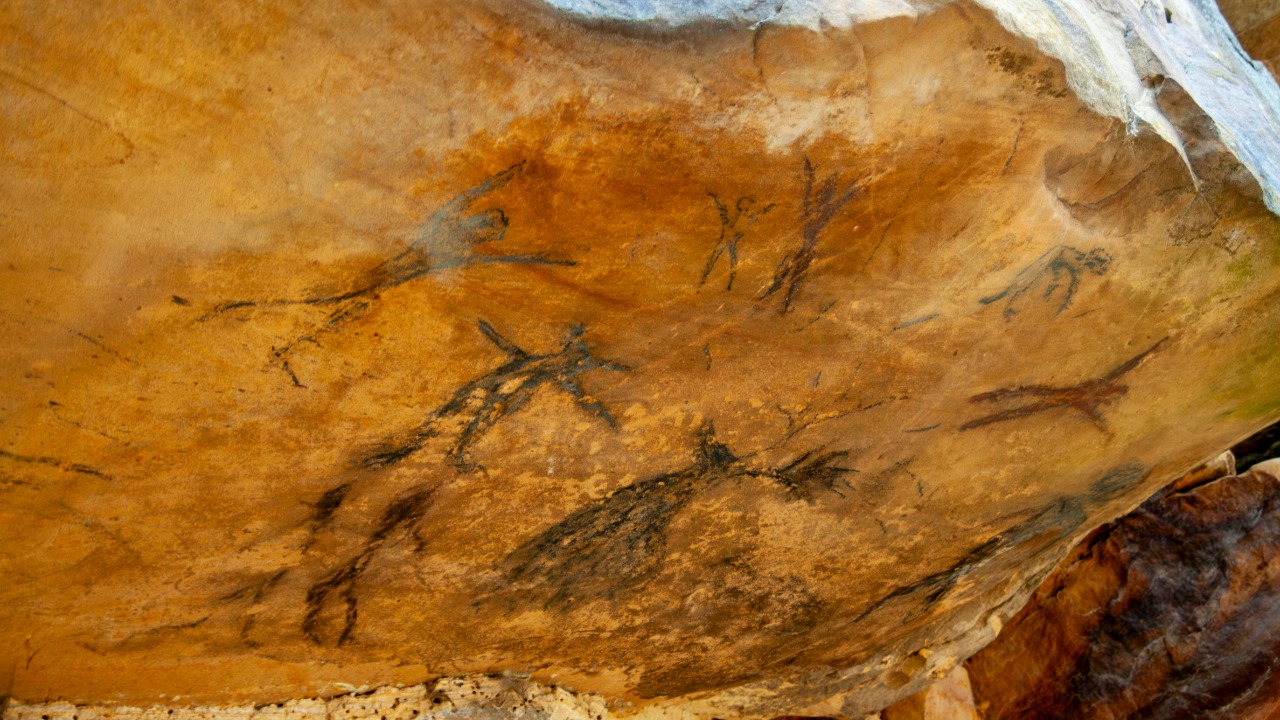
In a remote region of Brazil, archaeologists have unearthed rock art dating back approximately 9,000 years, which intriguingly depicts scenes that seem to reference dinosaurs. Found alongside ancient dinosaur footprints, this discovery challenges our understanding of early human awareness of extinct megafauna and suggests that these prehistoric humans may have interacted with or observed dinosaur remnants, incorporating them into their cultural expressions.
The Discovery Site in Brazil
The rock art was discovered in a remote and rugged terrain in Brazil, which has preserved both human markings and dinosaur footprints for thousands of years. The environmental context of the site, including geological features like rock shelters, played a significant role in the survival of the art and its juxtaposition with the dinosaur tracks. The initial survey methods used by researchers to identify the site were part of a 2024 expedition that led to the unveiling of this intriguing overlap of prehistoric human and dinosaur traces source.
Characteristics of the Rock Art
The 9,000-year-old rock sketches are etched in a style that includes motifs resembling dinosaur forms or tracks. The techniques employed in creating the rock art, such as pecking or incising into stone surfaces, align with known prehistoric artistic practices in the region. Specific depictions within the art suggest human interpretation of dinosaur-related features, further supporting the artwork’s thematic focus on ancient creatures source.
The Accompanying Dinosaur Footprints
Alongside the rock art, dinosaur footprints were discovered. These footprints, which date back to the Mesozoic era, predate human presence by millions of years. The footprints’ size, shape, and estimated age provide valuable paleontological insights. Notably, the 9,000-year-old human markings were placed in direct proximity to these fossilized impressions, suggesting a possible interaction or observation by early humans source.
Dating and Scientific Validation
The rock art was dated to approximately 9,000 years ago using methods such as radiocarbon analysis on associated organic materials and stylistic comparisons with dated regional artifacts. The discovery was first publicized in March 2024, revealing the find’s age and context. However, dating the artwork and footprints together presented challenges, as the human element is significantly younger than the dinosaur traces source.
Implications for Prehistoric Human-Dinosaur Connections
The rock art suggests that early humans may have interacted with dinosaur footprints, possibly viewing them as significant natural or spiritual elements in their worldview. This site provides evidence of prehistoric human awareness of dinosaurs, as indicated by the artwork’s interpretive depictions of the tracks. It’s possible that 9,000-year-old communities in Brazil incorporated these ancient prints into their myths or daily observations source.
Research Findings and Ongoing Studies
Researchers have gained key insights from the 9,000-year-old rock art, which sheds light on prehistoric interactions with dinosaur remnants. Publications from December 2024 and February 2025 expanded on the discovery’s human-dinosaur linkage through detailed examinations. Future research directions include additional excavations at the Brazilian site to uncover more about the 9,000-year-old artistic traditions tied to dinosaur remnants source.